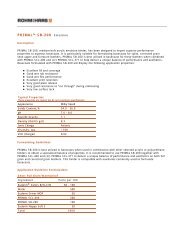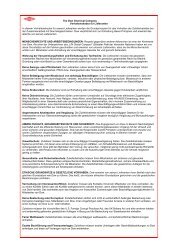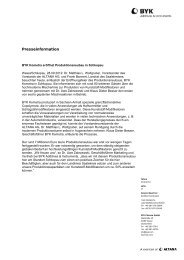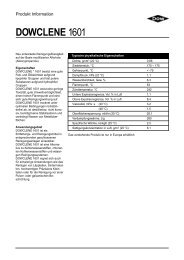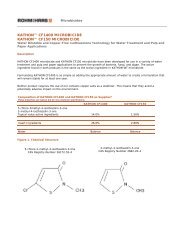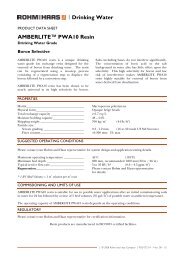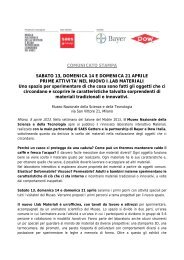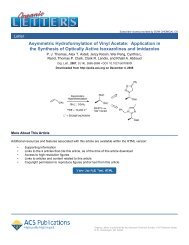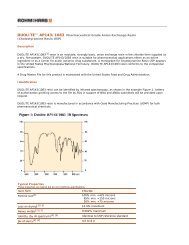CVD Zinc Sulfide - The Dow Chemical Company
CVD Zinc Sulfide - The Dow Chemical Company
CVD Zinc Sulfide - The Dow Chemical Company
Create successful ePaper yourself
Turn your PDF publications into a flip-book with our unique Google optimized e-Paper software.
Eq. (1)<br />
where θ is the angle of incidence (measured from the normal to the surface) and n is the refractive index of the<br />
material. For normal incidence, i.e., cos θ = 1 and sin θ = 0, Eq. (1) reduces to:<br />
Eq. (2)<br />
This will determine reflection from the first (front) surface only. Before the ray of light can exit from the opposite<br />
side, it undergoes a second reflection from the inside of the second surface. This second reflection also bounces<br />
around and if all of this is added up, the total theoretical external transmittance of a polished, uncoated, plane<br />
parallel plate, taking into account multiple internal reflections, and assuming there is no absorption or scattering<br />
within the material, is:<br />
Eq. (3)<br />
where T is the total theoretical external transmittance, which is the maximum transmission possible for an<br />
max<br />
uncoated window. T is a function of wavelength since n varies with the wavelength of light.<br />
max<br />
Attenuation Coefficient<br />
<strong>The</strong> attenuation coefficient, α, is a measure of the loss in transmission due to absorption and scattering of light in<br />
the optical material. <strong>The</strong> measured transmission T, through an optical window of thickness t, is given by:<br />
Eq. (4)<br />
where R is defined in Eq. (2) and a is the attenuation coefficient which has units of reciprocal length, i.e., cm -1 . A<br />
less precise, but more commonly used formula is:<br />
Eq. (5)<br />
For example, if α = 0.1 cm -1 , t = 1 cm and R = 0.15, then T = 0.66 using Eq. (4) and T = 0.65 using Eq. (5).<br />
Since most commercially available conventional IR spectrophotometers have an accuracy of ± 1% for transmission<br />
measurements, in most cases Eq. (5) would be adequate to calculate attenuation coefficients from transmission<br />
data provided T < T . When T ≈ T Fourier Transform IR (FTIR) spectrometers can be used to determine α.<br />
max max<br />
FTIR spectrometers typically can achieve transmission accuracies of better than 0.1 %.<br />
Absorption Coefficient<br />
<strong>The</strong> most widely adopted method for measuring low level optical absorption losses in the infrared is adiabatic laser<br />
calorimetry. <strong>The</strong>rmocouples are attached to the sample periphery and, for a given incident laser power, the<br />
thermal rise and decay as a function of laser irradiation is recorded. <strong>The</strong> magnitude or rate of thermal rise in the<br />
sample is proportional to the absorption coefficient of the sample (both surface and bulk absorption). If the<br />
absorption coefficient of the material to be tested is small, then the following equation can be used to determine<br />
the absorption of the sample:<br />
Eq. (6)<br />
Here n = index of refraction, m = mass of the sample, c = heat capacity, Pt = power transmitted,<br />
(dT Gain /dt) T = slope of the rising part of the temperature vs. time curve at the temperature





